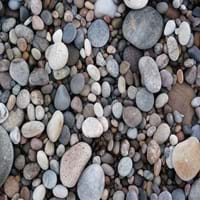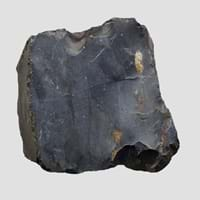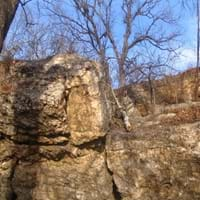Chert Rock
Definition
0
Definition
Chert is a hard, dark, opaque sedimentary rock which is composed of silica with an amorphous fine-grained texture 0
History
0
Origin
Unknown 0
Discoverer
Unknown 0
Etymology
From flint-like quartz, 1670s, of unknown origin- a local term, which has been taken into geological use 0
Class
Sedimentary Rocks 0
Sub-Class
Durable Rock, Hard Rock 0
Family
0
Group
Not Applicable 0
Other Categories
Fine Grained Rock, Opaque Rock 0
Texture
0
Texture
Banded, Rough 0
Color
Black, Brown, Green, Grey, Red, White 0
Maintenance
Less 0
Durability
Durable 0
Water Resistant
Yes 0
Scratch Resistant
Yes 0
Stain Resistant
Yes 0
Wind Resistant
No 0
Acid Resistant
Yes 0
Appearance
Glassy or Pearly 0
Uses
0
Architecture
0
Interior Uses
Decorative Aggregates, Homes 0
Exterior Uses
As Building Stone, As Facing Stone, Garden Decoration, Office Buildings 0
Other Architectural Uses
Curbing 0
Industry
0
Construction Industry
Arrowheads, Construction Aggregate, Cutting Tool, Spear Points 0
Medical Industry
Not Yet Used 0
Antiquity Uses
Artifacts, Monuments 0
Other Uses
0
Commercial Uses
Creating Artwork, Gemstone, In fire-starting tools, Jewelry, To ignite fire, Used in flintlock firearms 0
Types
0
Types
Flint, Jasper, Radiolarite, Common Chert, Chalcedony, Agate, Onyx, Opal, Magadi-type Chert, Porcelanite, Siliceous Sinter 0
Features
Clasts are smooth to touch, Easily splits into thin plates, Has High structural resistance against erosion and climate 0
Archaeological Significance
0
Monuments
Used 0
Famous Monuments
Data Not Available 0
Sculpture
Not Yet Used 0
Famous Sculptures
Not Applicable 0
Pictographs
Not Used 0
Petroglyphs
Not Used 0
Figurines
Not Yet Used 0
Fossils
Present 0
Formation
0
Formation
Chert forms when microcrystals of silicon dioxide grow within soft sediments that become limestone or chalk. The chert formation can be either of chemical or biological origin. 0
Composition
0
Mineral Content
Quartz, Silicon 0
Compound Content
Silicon Dioxide 0
Transformation
0
Metamorphism
No 0
Types of Metamorphism
Not Applicable 0
Weathering
No 0
Types of Weathering
Not Applicable 0
Erosion
Yes 0
Types of Erosion
Chemical Erosion 0
Properties
0
Physical Properties
0
Hardness
6.5-7 0
Grain Size
Very fine-grained 0
Fracture
Uneven, Splintery or Conchoidal 0
Streak
White 0
Porosity
Highly Porous 0
Luster
Waxy and Dull 0
Compressive Strength
450.00 N/mm2 1
Cleavage
Non-Existent 0
Toughness
1.5 0
Specific Gravity
2.5-2.8 0
Transparency
Translucent to Opaque 0
Density
2.7 g/cm3 0
Thermal Properties
0
Specific Heat Capacity
0.74 kJ/Kg K 19
Resistance
Heat Resistant, Impact Resistant, Pressure Resistant, Wear Resistant 0
Reserves
0
Deposits in Eastern Continents
0
Asia
China, India, Iran, Japan, Oman, Russia, Saudi Arabia, Taiwan, Thailand, Vietnam 0
Africa
Kenya, Morocco, South Africa, Tanzania 0
Europe
Austria, France, Greece, Italy, Malta, Poland, Portugal, Serbia, Spain, Sweden, United Kingdom 0
Others
Greenland, Mid-Atlantic Ridge 0
Deposits in Western Continents
0
North America
Canada, Mexico, USA 0
South America
Bolivia, Brazil 0
Deposits in Oceania Continent
0
Australia
New South Wales, Queensland, South Australia, Western Australia 0
Information about Chert
Rocks are naturally occurring solids which are composed of minerals & have been used by humans since ages. From Stone Age, rocks are used for various purposes. Also, the metals and minerals found in rock play an important role in our life. Get to know all the Chert Uses. We have provided you with all information about Chert rock here. Chert is a hard, dark, opaque sedimentary rock which is composed of silica with an amorphous fine-grained texture. Chert is available in black, brown, green, grey, red, white colors. The streak of a rock is the color of powder produced when it is dragged across an unweathered surface. The streak of Chert is white. Get to know more about Chert rock and characteristics of Chert rock in the next sections.
|
||
|
||
|









